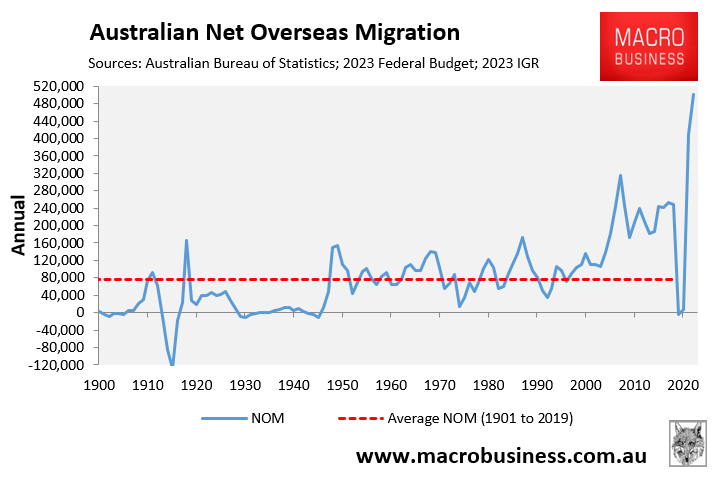Developers, policymakers, YIMBYs, and the mainstream media are lobbying Australian governments to relax planning regulations.
The objective is to enable the construction of hundreds of thousands of high-density homes in the “missing middle” of Australia’s major cities.
Their arguments disregard copious empirical evidence demonstrating that the high-rise apartment boom in the previous decade was a catastrophe.
Take a look at the chart below for Sydney, which shows an unprecedented boom in apartment construction, which peaked at nearly 45,000 units in 2016:

Australia was inundated with volumes of news articles and reports detailing the ‘problem’ of defective and combustible apartments in major cities prior to the COVID-19 outbreak.
Bronwyn Weir, a building regulation consultant, warned that “thousands and thousands of apartments have serious defects in their buildings. [The problem] is enormous”.
“We have what is now you know, a systemic failure that is quite difficult to unravel”.
“Some of these buildings could potentially be a write-off”, she said.
For example, the Strata Community Association NSW reported in October 2021 that approximately four out of every ten newly constructed apartment complexes in NSW had significant defects.
The study was launched following the identification of significant structural defects at Mascot Towers and Opal Tower in Sydney, which led to the temporary evacuation of residents.
A parliamentary inquiry in NSW likewise uncovered major structural flaws in recently constructed apartment complexes.
This year, the ABS reported that NSW Fair Trading had issued more than 30 work rectification orders across building sites, some for “potential serious defects”.
A game of “Russian roulette” existed with regards to purchasing an off-the-plan apartment, according to engineer Leith Dawes.
WSWS then reported in July that building defects will cost the owners of 276 apartments in the Inner West Vicinity complex in Sydney $50 million to rectify.
With this background in mind, it is disturbing to read that the NSW government is gearing up for Sydney’s biggest ever high-rise apartment boom:
“Sydney’s city and suburban skylines are set to metamorphose in just a few years with multiple high-rise apartment projects of up to 60 storeys on the way”.
“On estimated construction costs alone, there are currently $11 billion worth of developments from the top 100 projects on the go, from Willoughby and St Leonards in the north to Cronulla in the south, according to just-released data supplied by Cordell”.
“The five tallest towers it nominates — in Macquarie Park, the CBD and Parramatta — are above 50 storeys with eight above 40 storeys and the top 15 more than 30 storeys….. “
Fifteen years of pre-pandemic hyper-immigration fueled the proliferation of defective apartments by requiring the annual construction of tens of thousands of additional homes.
This led to a compromise between quality and speed, resulting in a decline in building standards.
What will happen when the supply of housing needs to ramp-up fast to accommodate the Albanese government’s record net overseas migration? Do we believe building standards will remain stable, deteriorate, or improve?

The answer is obvious: building standards will be further disregarded to expedite the construction of huge volumes of high-rise apartments to house the burgeoning population.
More defective high-rise slums will be constructed across Australia’s major cities to facilitate the reckless mass immigration policy of the Albanese government.

